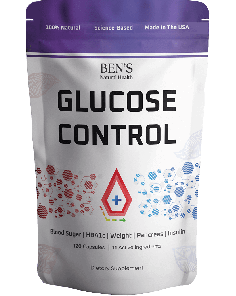Prostate cancer is a significant health concern for men, particularly as they age.
It is the second most frequent type of cancer in males.
It is estimated that up to 1 out of 9 men receive a prostate cancer diagnosis in their lifetime.
Luckily, prostate cancer is not usually aggressive, and most patients do not die from this cause. Still, it is pervasive and affects the quality of life and life expectancy of patients worldwide.
With this prevalence, it is not surprising that prostate cancer is widely studied in the scientific literature. Still, it is striking to know that prostate cancer screening methods are not yet 100% reliable.
It is challenging to diagnose prostate cancer due to its propensity to produce both false positives and false negatives.
In the United States in 2020, it was estimated that there would be up to 192,000 new prostate cancer diagnoses.
Not all cases are fatal. Some of them need aggressive therapy, and others are fine with active surveillance. However, according to statistics, up to 33,000 of these prostate cancer patients may die from this ailment. That’s why diagnosing prostate cancer and having accurate screening methods are essential for doctors and patients (1).
Ideally, screening tests should be noninvasive and 100% accurate. However, it is unlikely to find a screening test like this. Recent studies are considering urine tests as candidate screening methods for prostate cancer. This article will review the state-of-art in prostate cancer screening and how noninvasive urine tests are becoming a new trend in this field.
Get Your FREE PSA Lowering Diet Plan!
- Naturally lower PSA levels
- Reduce nighttime trips to the bathroom
- Enjoy better bladder control and urine flow
Diagnosing prostate cancer
The good news about prostate cancer is that the tumor tends to grow very slowly. Most cases are highly treatable, and a high proportion of patients will not die. But there is also bad news because, unlike skin cancer, it is challenging to diagnose.
You cannot see prostate cancer growth, and the signs and symptoms are elusive and not helpful. It is complicated to diagnose prostate cancer at an early stage despite our efforts. Screening tests can be problematic because they give out false positives and false negatives (2).
We can talk about the prostate-specific antigen (PSA) test. This is the most common blood test for prostate cancer, but it is not 100% accurate. Many things cause an elevated PSA level in the blood besides prostate cancer.
Even benign prostate hyperplasia can cause high levels of PSA, causing false-positive results. On the other hand, we can also have very aggressive prostate cancer that does not give out any signal in the PSA screening test.
Thus, prostate cancer screening should include the PSA blood test and other types of evaluation. One of them is the digital rectal examination. Prostate cancer usually grows on the posterior part of the gland. This part is in close contact with the rectus, and doctors can easily detect changes in the prostate gland by performing this test.
However, this is a very uncomfortable test for males. It is invasive, and most men feel discouraged just by thinking about it.
We could also use a very reliable and useful test to diagnose prostate cancer, the prostate biopsy. It is actually the most sensitive test, with a very high level of accuracy.
Highly suspicious cases of prostate cancer are often confirmed with a biopsy. But it shouldn’t be used systematically in every patient. It is the most invasive procedure and one that causes significant pain. Some patients end up with chronic bleeding and long-term pain problems after a prostate biopsy. Thus, there is currently a controversy on reducing the false positives and the need to undergo an unnecessary biopsy.
Other diagnostic methods include imaging tests such as MRI scans and ultrasound. They are useful to detect prostate enlargement. However, they are not accurate for prostate cancer diagnosis and never compared to the utility of a tissue biopsy, serum PSA levels, or a rectal exam.
That’s why significant efforts are now aimed at new methods to strengthen old diagnostic tests or create new ones. For example, different serum PSA measures PSA-based calculations can be made to adjust for false positives and give more accuracy. And there are interesting studies about a simple urine test that detects prostate cancer.
Urologists and prostate cancer specialists aspire to develop more accurate noninvasive tests as a primary goal.
It is the best way to diagnose patients, avoiding unnecessary prostate biopsy, and reducing its use and side effects to the bare minimum (3).

What is a urine test for prostate cancer?
A urine test is a noninvasive test performed with a urine sample. A urine test for prostate cancer is one that detects prostate cancer in the urine sample. This is ideally done by certain markers released by prostate cancer or triggered by the condition.
Recent advancements in prostate cancer science have led to discovering a molecular signature in this type of malignancy.
One of them is currently in use, known as the PCA3 test, and its PCA3 score. It is based on the measurement of a prostate cancer biomarker in urine tests. However, using this metabolite causes false positives and false negatives, too. It is somewhat more sensitive than specific, but the numbers never reach 100% accuracy (4).
Another tool for urine testing is the ExoDx Prostate Test. The sample is also collected in the urine, and it is appropriate for men over 50 years old. This test, combined with other diagnostic tools, can be used to obtain a risk score in patients with clinically significant prostate cancer (as in Gleason score equal to or higher than 7) (5).
New efforts are being made to widen this urinary test with other components, metabolites, and prostate cancer markers. By doing so, these studies aim to provide a more exact and reliable test that reduces the need for prostate biopsies. They are led by researchers from the Johns Hopkins Sydney Kimmel Comprehensive Cancer Center (6). They found a particular set of molecules in the urine that correlates with cancer development. With enough study and clinical trials, this advancement may lead to a new noninvasive prostate cancer test.
The urine is a heterogeneous solution of waste substances, water, and other molecules. It does have cells and valuable genetic material it carries from the urinary tract. The prostate is found in the last portion of the urinary tract, below the bladder.
Thus, it is a potential candidate for a urine test diagnosis. In this novel test, the investigators used certain urine molecules, including RNA, to create a fingerprint of prostate cancer that matches all or the majority of patients with this condition (6).
This new urine test for prostate cancer should be able to detect prostate cancer. Moreover, it should differentiate prostate growth in benign conditions from malignant prostate ailments.
How does the new noninvasive urine test work?
This non-invasive urine test detects cancer cells and genetic material shed from the prostate and other parts of the urinary tract. This material can be isolated and then analyzed by making use of advanced technology.
Some prostate urine test methods describe that, before taking the sample, we should perform a prostate massage. This method is meant to dislodge prostate cells into the urinary tract, increasing the test’s sensitivity. However, it appears that our technology is good enough and does not require this step. Thus, males should only collect their urine samples and send them or carry them to the laboratory.
This was the case in most recent studies. Diagnosed prostate cancer patients and other patients with benignant prostate conditions took their samples. They did not undergo a prostate massage before, and it was still possible to make the diagnosis.
This test works by detecting a molecular signature in the urine sample. RNA is sampled and sequenced using a technology known as mass spectrometry. With this technique, it is possible to measure different substances in the urine accurately. Unlike patients with a benign condition, those with prostate cancer displayed a diverse array of metabolites and RNA sequences (6).
Thus, what this new test does is detecting the fingerprint of prostate cancer in the urine. No previous prostate massage is required, making the technique noninvasive and more comfortable for males.
Benefits
- It is noninvasive: Unlike prostate biopsy and digital rectal examination, this study is noninvasive. It is even more comfortable than taking a blood sample to measure our PSA levels. Thus, patients are more likely to comply and use this test for early screening.
- It discriminates between cancer and benign conditions: This urine test looks for a particular prostate cancer fingerprint. It is entirely absent in cases of benign conditions of the prostate, such as BPH. Thus, this test discriminates prostate cancer from benign conditions. We still do not know how accurate it is to detect prostate cancer without false positives and false negatives. However, studies so far are promising, and the medical community is enthusiastic about it.
- It may be useful to determine cancer aggressiveness: In the future, the fingerprint to detect prostate cancer may be further developed. We could see different substances and RNA sequences for different stages and types of prostate cancer. Ideally, after a urine sample, we could get enough information to know if we are in front of prostate cancer, how dangerous it is, and the most appropriate treatment.
Drawbacks
- More extensive studies are still required: This urine test is still under development. More extensive studies are yet needed to validate what we know so far. It can be used as a screening method only if the results are reproduced in more comprehensive studies. Even after that, we need to know how it applies to large populations. PSA tests were received with expectations and enthusiasm. It was only after using them as screening tests that we understood their limitations. There’s always a possibility that something similar happens with urine tests for prostate cancer (6).
Conclusion
Prostate cancer is a relatively common type of cancer in male patients. The incidence is higher as we grow older, and the symptoms are sometimes difficult to detect. It is an elusive type of cancer, and it is not easy to diagnose patients in an early phase. Thus, different screening methods are recommended for patients depending on their prostate cancer risk factors.
The problem with prostate cancer screening is that tests are either invasive or not conclusive. The PSA test is essential for prostate cancer diagnosis, but levels can be modified by inflammation, sex, and benign prostate enlargement.
Digital rectal examination is very accurate and useful but depends on the doctor’s ability and sensitivity, and it is uncomfortable for patients. Prostate biopsies are excellent to confirm a cancer diagnosis, but they are very invasive and uncomfortable, sometimes leaving long-term consequences. Thus, we should try to reduce the number of unnecessary prostate cancer biopsies.
That’s why the recent development of a urine test for prostate cancer causes enthusiasm in the medical community. It is based on the detection of substances and RNA found in prostate cancer patients. It is a combination of metabolites that create a prostate cancer fingerprint. We can search for the same combination in patients to detect prostate cancer, even in an early phase.
This test is very promising because it is a noninvasive test that won’t cause side effects and won’t be uncomfortable. It does not require a prostate massage before collecting the urine sample. It discriminates between prostate cancer and benign conditions. And it may be further improved to detect different types of aggressive cancer (including high-grade prostate cancer) and guide the treatment.
More clinical trials and larger studies are still required before using this test in the general population (6).
Explore More








